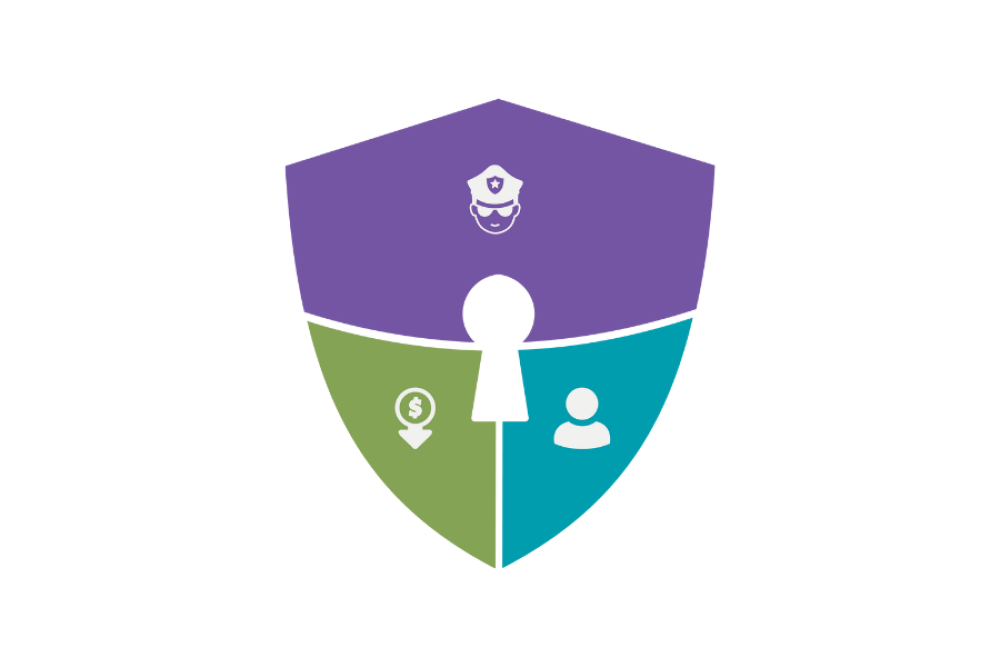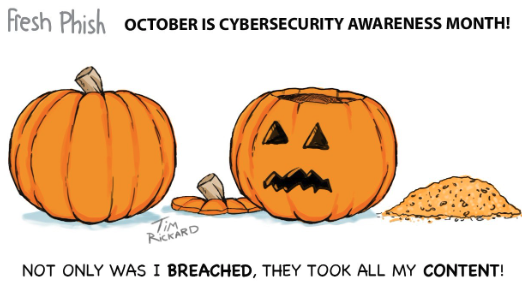Cyber security awareness month 2023: Explore digital threats Written on

As October marks cyber security month, we kick off a series of blogs about cyber threats and how to secure your business. The month of pumpkin-spiced lattes and spooky nights is an intriguing blend of two worlds. On one hand, it's the month of Halloween, when we embrace the spooky, dress up in costumes, and celebrate the mystical. But on the other hand, October is also Cyber Security Month, a time to illuminate the equally mysterious world of digital threats. It's the perfect paradox – a month where we revel in both the enchantment of Halloween and the imperative need for digital security, reminding us that even in the virtual realm, vigilance is key to keeping the real scares at bay.
Grab your cyber shields and join us as we dive into the fascinating realm of cybersecurity.

Cyber threats and the imperative for vigilance
Cyber threats are real, and they're not going away anytime soon. In fact, they're evolving and getting sneakier by the day. From emails that masquerade as a bank to attacks holding company’s data hostage, the digital frontier can be a perilous place.
Last year, the European Parliament officially recognized ransomware, malware, and social engineering threats as the prevailing cyber risks. Research findings referenced by Enisa underscore that a substantial majority—nearly 60%—of security breaches across Europe, the Middle East, and Africa incorporate a significant social engineering component. This surreptitious strategy often takes the form of phishing, typically executed through email, or smishing, leveraging text messages.
These cyber mischief-makers tend to impersonate top-notch organizations, reputable organizations, with the financial and technology sectors serving as prime targets for their nefarious activities. And watch out, because the ever-evolving threat landscape has seen an escalation in attacks directed at cryptocurrency exchanges and cryptocurrency holders, requiring heightened vigilance and security measures.

Harnessing decentralized face authentication for enhanced security
In the ongoing battle for online security, a game-changing hero has emerged: decentralized face authentication. Picture this: a world where your face becomes the ultimate key to safeguarding your digital life. Not only is it futuristic, but it's also a powerful weapon against the age-old villains of the internet – phishing and other social engineering attacks.
Face authentication is a technology that verifies a person's identity by analyzing and matching their unique facial features. It renders passwords and codes obsolete, as your face becomes the authentication factor. You've probably seen it in action on your phone when you unlock it with your face. However, a decentralized approach is slighty different from your mobile native biometrics.
Centralized databases serve as a prime target for hackers, akin to an all-you-can-eat buffet of sensitive personal information. In these consolidated repositories, cybercriminals discover a concentrated source of valuable data, offering a single point of entry for unauthorized access and exploitation.
Decentralized face authentication disperses the authentication process across several nodes, eliminating the vulnerability associated with centralized databases. Biometric templates are not stored in one central honeypot; instead, it's fragmented and distributed, making it exceptionally challenging for hackers to compromise. This decentralized approach adds an unprecedented layer of security, as even if one node is breached, it doesn't compromise the entirety of data.
At Youverse, we're all about making the digital world safer for everyone. Remember to stay cyber-smart and keep your virtual spurs at the ready. Together, we'll navigate the digital frontier and keep it safe for all pioneers.
Got questions or topics you'd like us to cover this month? Drop us a message at info@youverse.id and let's start this cybersecurity conversation!






